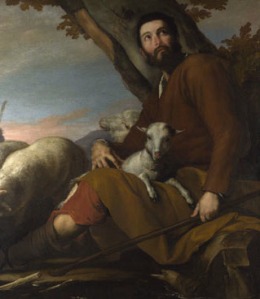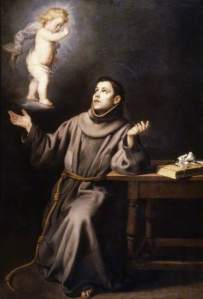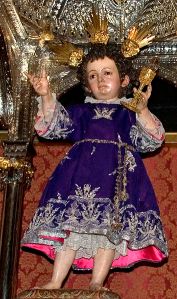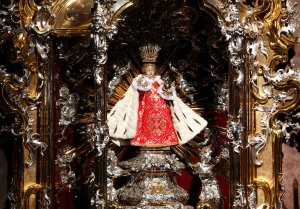The Master of the Annunciation to the Shepherds, The Annunciation to the Shepherds
In Birmingham the Christmas lights are up so, in spite of the fact that it’s only November, this post is going to have a seasonal feel. The Annunciation to the Shepherds depicts the moment the birth of Christ was announced to some very surprised shepherds. The Shepherds then rushed to Bethlehem, where they found Mary, Joseph and the Christ child lying in a manger.
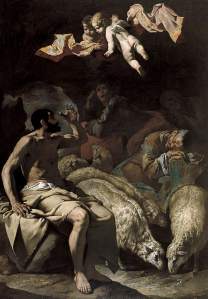
Master of the Annunciation to the Shepherds, The Annunciation to the Shepherds, Birmingham Museums Trust
Whilst we don’t know the name of the artist who painted The Annunciation to the Shepherds, we can connect it to group of paintings produced by the same artist who, unsurprisingly, painted the annunciation to the shepherds a lot. Painting was a very commercially-orientated practice and often, once an artist had found a successful subject, they would paint it several times over. The Annunciation to the Shepherds is one of the artist’s key works that gave him his name, along with a horizontal version of the subject in the Museo di Capodimonte, Naples.
Although his identity is unclear, The Master of the Annunciation to the Shepherds was clearly an exceptionally talented painter. We know he was living and working in Naples and was certainly influenced by the naturalistic style of the Spanish artist Giuseppe de Ribera, who had settled in Naples in 1616. The Kingdom of Naples was then part of the Spanish Empire, and was ruled by a succession of Spanish Viceroys, as such there was a strong cultural relationship between these two territories. Ribera had also lived in Rome where, like many of the artist’s in BMAG’s collection, he was inspired by the powerful realism of Caravaggio. The Master of the Annunciation to the Shepherds’ painting also reveals this Caravaggesque influence. Like Caravaggio, he is interested in the depiction of real people; the shepherds presented uncompromisingly, wearing typically rustic clothes and sleeping amongst their flock. He is similarly influenced by Caravaggio’s use of chiaroscuro (extreme contrasts of light and shade). In fact, it has even been suggested that the Master of the Annunciation to the Shepherds used charcoal dust in the flesh tones to enhance the chiaroscuro. When The Annunciation to the Shepherds first entered the BMAG collection it was thought to be an early work by the famous Spanish artist Diego Velázquez. In a rather embarrassing episode for the museum, this attribution was soon proved to be incorrect.
The painting has an amazing provenance and formed part of the collection of Frank Hall Standish of Duxbury (1799-1840), a gentleman who built up a considerable collection of Spanish art during his travels to that country. At his death, Standish offered his paintings to the British nation; on the condition that the baronetcy that had been in his family was revived. When this was refused, however, Standish bequeathed them instead to the King of France, Louis Philippe, ‘as a testimony of my esteem for a generous and polite nation’, in what was effectively a massive ‘up yours’ to Britain. Louis Philippe exhibited Standish’s painting in their own gallery within the Louvre. When Louis Philippe was forced to flee France after the revolution of 1848, however, he shipped the paintings back to Britain. According to reports, they were hastily transported and many were without frames and some were damaged by sea water. Yet The Annunciation to the Shepherds made it in one piece and was sold at Christie’s, London in 1853. The Annunciation to the Shepherds has had an eventful life: Naples – Seville – Chorley, Lancashire – Paris – London – before eventually making its way to Birmingham.
The Annunciation to the Shepherds is going to be in my final display. It’s such an important painting, both visually and in terms of its history, and I think more people should know about it. I have almost settled on a final hang now and am about to begin the long process of writing exhibition labels. It really feels like it’s all starting to happen now!
